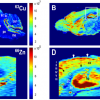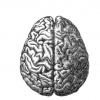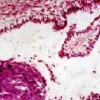Alzheimer’s and Amyloids
 The word “factor” is often seen used in manuscripts of molecular biology and biochemistry as a fancy way of saying unknown. Before the inner workings of complex genetic of molecular pathways are understood, there are often clues that suggest the presence and operation of certain unknown and unnamed components which might be labeled factor for lack of a better term (e.g. transcription factor, or translation initiation factor). Later these factors may become well described; sometimes the term factor is dropped or in some cases, especially where it was applied to a single instance of what is a large family of “factors” the term will stick.
The word “factor” is often seen used in manuscripts of molecular biology and biochemistry as a fancy way of saying unknown. Before the inner workings of complex genetic of molecular pathways are understood, there are often clues that suggest the presence and operation of certain unknown and unnamed components which might be labeled factor for lack of a better term (e.g. transcription factor, or translation initiation factor). Later these factors may become well described; sometimes the term factor is dropped or in some cases, especially where it was applied to a single instance of what is a large family of “factors” the term will stick.
The point in mentioning these semantics is that the public is generally (kept?) unaware of how complicated the research process is, and how scientists who venture into discovering the unknown have to pick and choose their battles, making choices about how much or how many details they will pursue and at what cost.
It has been suspected for some time now that in Alzheimer’s the abnormal build up of plaques (formed by proteins called β-Amyloids) cause toxicity to neurons and damage the functioning of the brain. This finding was already a major step in fighting a devastating disease which is still poorly understood and which, not for lack of effort, has no satisfactory clinical intervention beyond attempts at early identification, some mildly successful drugs which may delay its onset, and general palliative care.
Recently, an investigation published here in the Journal of Biological Chemistry neatly illustrates how refined sleuthing can refine the instruments of inquiry available in the fight against Alzheimer’s and other debilitating diseases. The β -amyloid protein (APP) which has been the subject of previous study actually comes in three forms (APP695, APP751, and APP770) which differ in the amino acid length of the protein. The work by Nikolai Belyaev et.al. demined that it this dangerous plaque is formed mainly by the APP695 form which is found in higher concentration in brain and nerve cells. Identification of this particular APP isoform also explains the presence of another protein (AICD) which forms when the APP695 isoform is broken down leading to activation of genes that further damage cells.
So why weren’t researchers focusing on this isoform before, instead choosing to study all three forms of APP (as if they were a single entity)? It’s a valid question. Was this negligence on anyone’s part? Mostly likely the answer is no. This new finding is simply the unfolding of the scientific process such as it is. For those who did the original work on looking at β -amyloid proteins, or any other proteins, there are only a limited number of questions that can be asked within a given time, given budget, or a given amount of accessible knowledge. Although the pace of research is in Alzheimer’s accelerating, the picture is never complete; pointed investigations like this one will continue to find gaps, and sharpen the focus as progress is made toward a cure.
| Print article | This entry was posted by Jason Williams on November 15, 2010 at 1:39 pm, and is filed under G2C Online. Follow any responses to this post through RSS 2.0. You can skip to the end and leave a response. Pinging is currently not allowed. |









